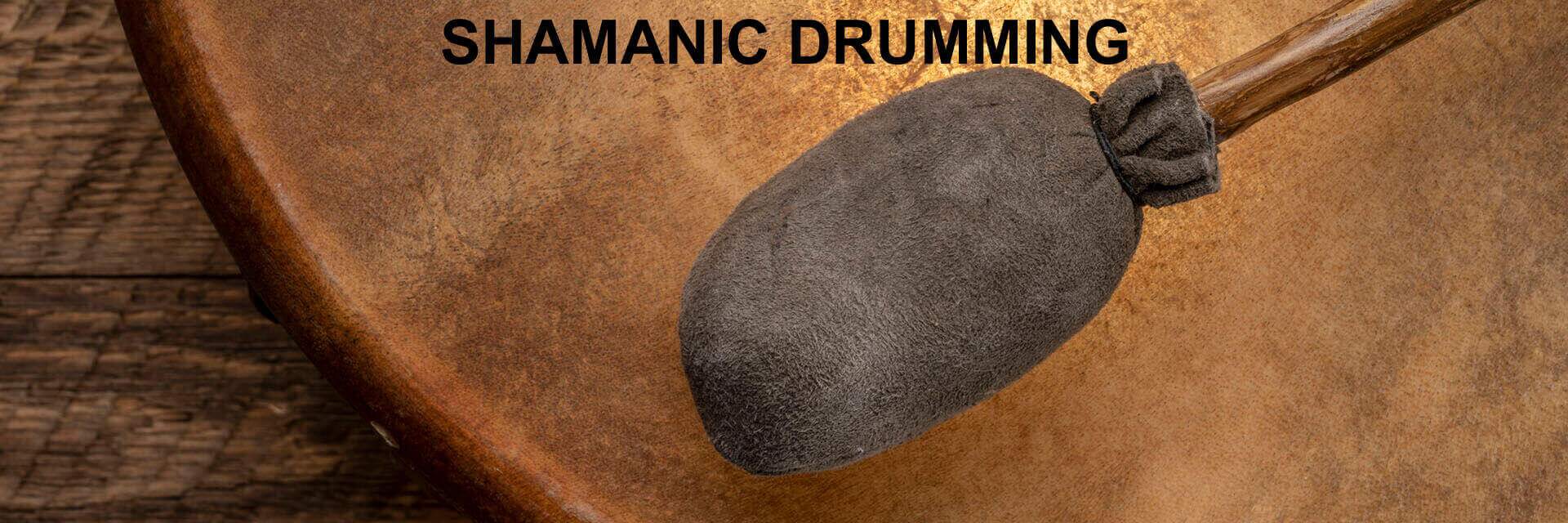


Rhythm healing is an ancient approach that uses therapeutic rhythm techniques to promote health and well-being. Rhythm healing employs specialized rhythmic drumming patterns designed to influence the internal rhythmic patterns of the individual and harmonize those which are thought to be causing the illness or imbalance. When administered correctly, specific rhythms may be used to accelerate physical healing, stimulate the release of emotional trauma, and produce deeper self-awareness. This technique has been used for thousands of years by indigenous cultures around the planet to treat a variety of conditions.
Rhythm healing relies on the natural law of resonance to restore the vibrational integrity of body, mind, and spirit. Resonance is the ability of a sound wave to impart its energy to a substance such as wood, metal, or the human body, making it vibrate in sympathy. When we drum, our living flesh, brainwaves, and spiritual energy centers begin to vibrate in response. The drum pattern projects onto the body a supportive resonance or sound pattern to which the body can attune. This sympathetic resonance forms new harmonic alignments, opens the body's various energy meridians and charkas, releases blocked emotional patterns, promotes healing, and helps reconnect us to our core, enhancing our sense of empowerment and stimulating our creative expression.
Though the rhythm healer may have a repertory of established rhythms, every situation is unique. Determining the right rhythm in each case is a highly individual matter. No predetermined formulas are given. The rhythmist needs to create a dialogue between the sounds he/she produces and the responses of the person being treated. Tuvan shamans, for example, often improvise sounds, rhythms, and chants in order to converse with both the spirit world and the patient. The sounds produced by the shaman and the drum go out and certain frequencies and overtones are then reflected back. Information is generally received as subtle vibrations, which the shaman then interprets as sounds, pictures, or as rhythms. Through trained observation, the shaman discovers the right rhythm for their patient. It may be a new rhythm, uniquely indicated for the situation.
This means that one must learn to listen very carefully to the sound of the drum. The drum, like all our relations, is alive, and it is trying to tell you something. Listen with more than just your ears. To hear the voice of the drum you must listen with your entire being. Ask your drum and your helping spirits to help you. State your intention in a clear and concise manner and then open yourself to the help that comes. You must open the heart and empty the mind. Become like a hollow bone and allow the power of the spirits to fill you. Give up the need for control. This requires an attitude of surrender and trust.
I learned that when I trust my spirit helpers to play the appropriate rhythm, which I don't know in advance, I can't go wrong. I know only that what I play is what I experience and it is a way to honor my helping spirits. I also feel a profound connection with everything around me. The key is to let spirit work through you for the purpose of healing -- to become an instrument of healing. To learn more, read Shamanic Drumming: Calling the Spirits.
Preview our Digital Books and Music
Affiliate disclosure: As an Amazon Associate, we earn from qualifying purchases. You can learn more about our editorial and affiliate policy here. Music Attribution.
© 2001 - 2025 Talking Drum Publications